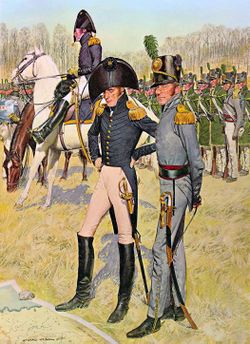Battle of Leecaster
| Battle of Freedom Point | |||||||
|---|---|---|---|---|---|---|---|
 | |||||||
| |||||||
| Belligerents | |||||||
|
|
| ||||||
| Commanders and leaders | |||||||
|
|
| ||||||
| Units involved | |||||||
|
Army of St. Anthony Army of Bay Du Nord Army of St. John | Army of Canada | ||||||
| Strength | |||||||
| 28,300 | 53,000 | ||||||
| Casualties and losses | |||||||
| 6,988 | 10,673 | ||||||
The Battle of Leecaster or commonly known as the Battle of Freedom Point was the last major battle of the Canadian War, it signified the end of the Republic of Newfoundland's ability to fight the war.
Richard Dickson decided the best place for a battle was between two mountains near Leecaster. When all the armies were mustering, Richard told his Vice Commander "I do not think our country shall survive today's bloodshed, there is little hope for our victory." Originally the battle was intended to only have two Newfoundland armies, the Army of Bay Du Nord under the command of Andrew Stewart and the Army of St. John under the command of Kayden Chapman but during the heat of battle one of Richard's aides spotted a force marching behind their right flank and he was about to tell the general they were flanked but he realized that it was really the Army of St. Anthony under the command of Richard's brother and former Newfoundland Consul Alexander Dickson. The St. Anthony army had thought to have been lost, routed during the 16 days campaign but there they were preparing to help defeat the British one last time.